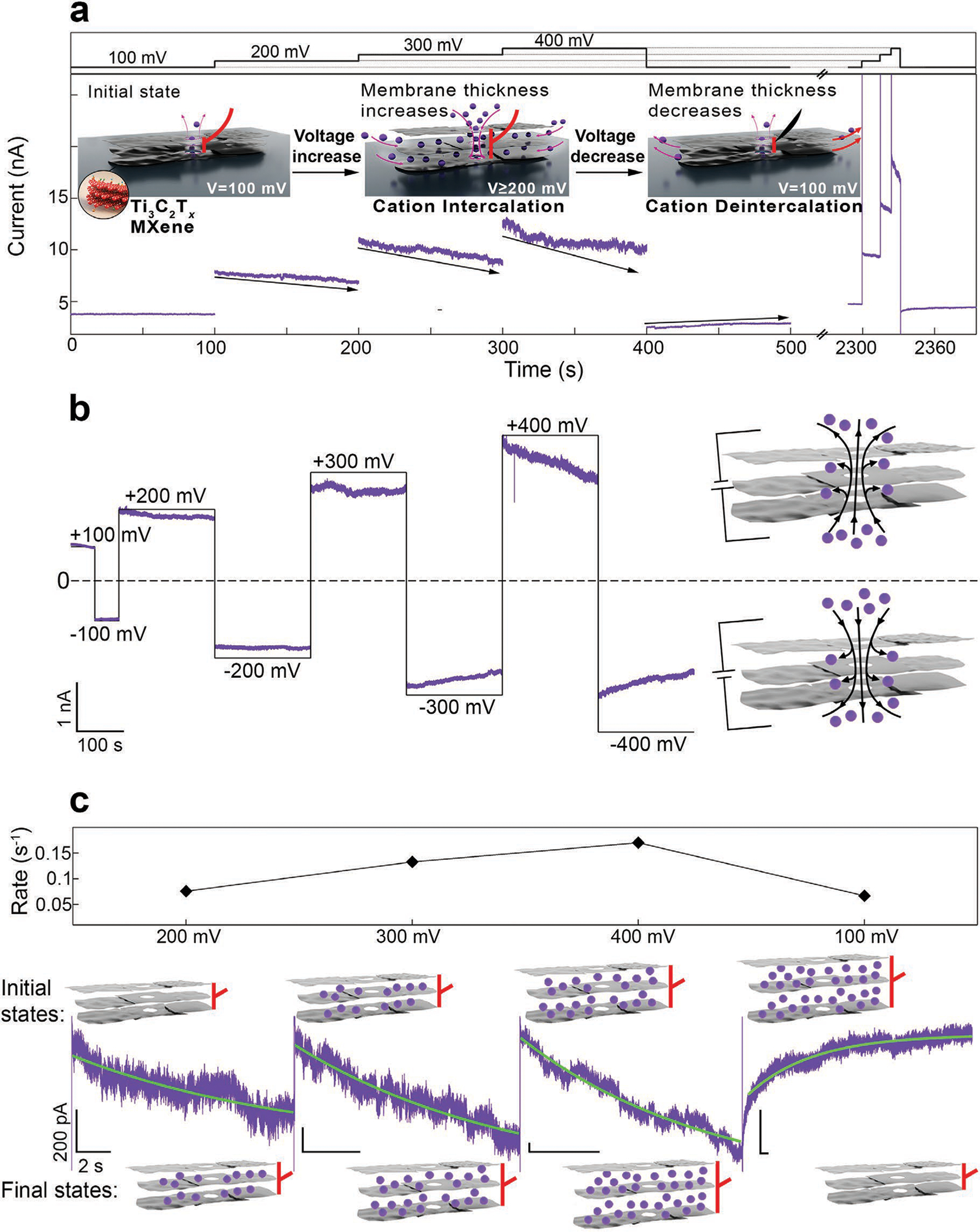Figure 2.

Actuation property of nanopores in few-layer MXene membranes due to K+ (de)intercalation. a) Current trace of nanopore B demonstrates that with increasing voltage, the nanopore conductance value decreases due to cation intercalation. This intercalation process recovers via deintercalation when the voltage is decreased to lower values (e.g., 100 mV). The inset shows schematically how cation (de)intercalation can occur through defects in the MXene multilayer membrane, causing membrane swelling and contraction. b) Current trace of nanopore C at positive and negative voltages showing the actuation properties of MXene pores regardless of the electric field direction (black curve = applied voltage). c) Single-exponential functions were fitted to the current traces shown in (a). As the voltage increases, the rate of the conductance change (τ−1) increases (At 100 mV, the capacitive response of the nanopore to the voltage change is seen as an initial, faster rate that is omitted in our analysis). The time-dependent change in the nanopore thickness is shown schematically. Buffer: 0.4 m KCl, 10 × 10−3 m Tris, pH 7.5. All horizontal and vertical scale bars for the traces are 2 s and 200 pA, respectively.
